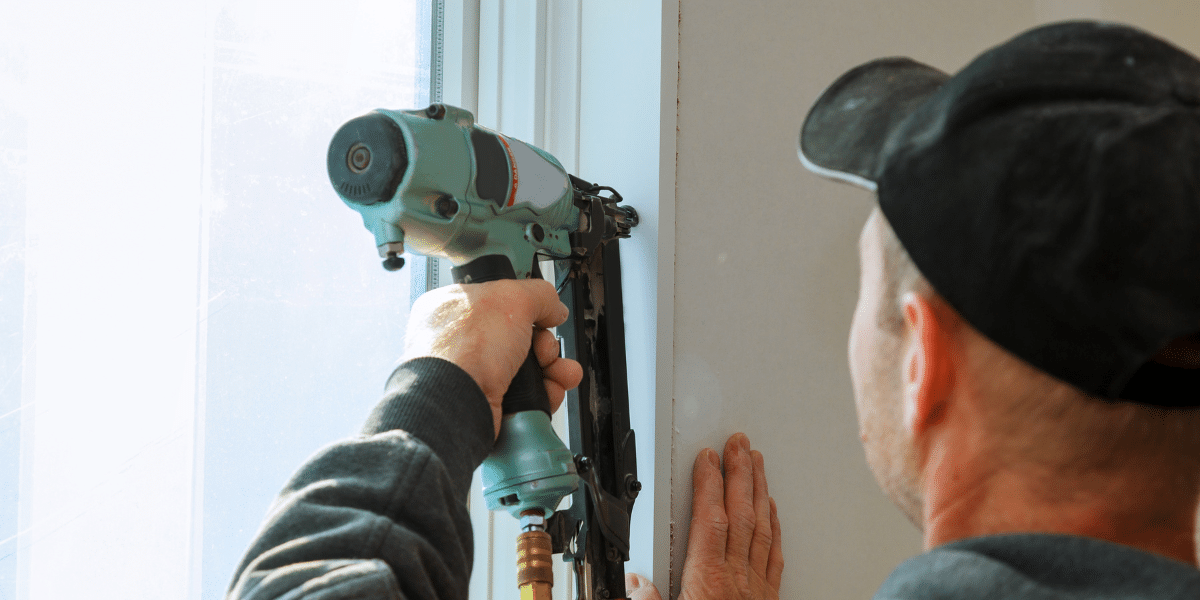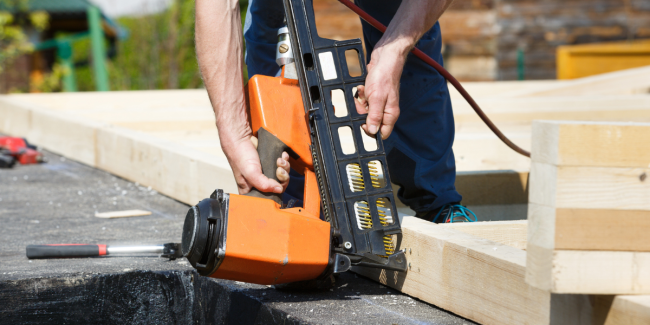
Nail Gun Safety 101: Essential Rules for Injury-Free Carpentry
According to the CDC, approximately 37,000 people in the United States are treated for nail gun-related injuries yearly. Among these, construction workers are particularly at risk, with half of all reported nail gun injuries occurring in the construction industry.
Common Risks and Injuries Associated with Nail Guns
It is worth mentioning that nail gun injuries can result in various types of harm, including bone fractures, damage to internal organs, paralysis, brain damage, and even death. Therefore, following proper nail gun safety guidelines and receiving adequate training when working with these power tools is crucial.
Some common causes of nail gun injuries include:
Unintended Nail Discharge
Using a nail gun with a bump or automatic trigger can lead to unintentional nail discharge. This can result in injuries to the user or other workers nearby.
Lack of Training
Insufficient training can increase the risk of accidents. Without proper training, users may not be aware of safety precautions or may not handle the nail gun correctly.
Fast-Paced Work
The fast-paced nature of construction work can lead to increased risks when using nail guns. Workers may rush or fail to take necessary precautions, leading to accidents.

Shop Crane Point Industrial’s Power Tools and Equipment Now!
Basic Nail Gun Safety Rules
Here are some basic nail gun safety rules that should always be followed to ensure safe usage:
- Read the Manual: Each nail gun model may have specific safety features and operating procedures that must be followed. Reading the manufacturer’s manual thoroughly and understanding the recommended nail gun safety procedures are important. The manual will provide information on properly using the nail gun, including any specific precautions or limitations. It is also essential to ensure that the tool meets all applicable safety standards and guarding requirements.
- Wear Proper Personal Protective Equipment (PPE): Safety equipment such as safety glasses, a hard hat, hearing protection, and steel-toed footwear should be worn when operating. Goggles are essential for protecting your eyes from flying debris, while a hard hat can protect your head from any potential falling objects. Hearing protection is important to prevent long-term damage from the loud noise generated by the nail gun, and steel-toed footwear can protect your feet from accidental nail strikes.
- Inspect the Nail Gun: Inspect it for any damage or wear before use. Ensure that all safety mechanisms are functional, the magazine is loaded correctly, and there are no jams or obstructions.
- Keep Your Hands Clear: Keep your hands and body parts away from the nail gun’s firing area. Avoid placing your fingers or hands near the trigger when not actively using the tool.
- Focus on Your Task: Stay focused on the task at hand. Avoid distractions while using any type of nail gun, as accidents can happen when attention is diverted.
- Maintain a Secure Grip: Hold the nail gun with both hands and maintain a firm grip while operating. This helps control the tool and reduces the risk of accidental discharge.
- Keep the Work Area Clear: Clear the work area of clutter, debris, and obstacles. This prevents accidental firing caused by unintended contact with objects or materials.
- Disconnect Power Source: When not in use, disconnect the nail gun from its power source (air compressor or battery) to prevent unintentional firing during tool maintenance or handling.
- Never Bypass Safety Features: Do not disable or bypass any safety features on the nail gun, such as the contact trip or sequential trip mechanism. These features are designed to prevent accidental firing.
- Point Away from Others: Always point the nail gun away from yourself and others, whether it’s loaded or not. Accidental firing can cause serious injuries.
- Avoid Trigger Holding: Do not hold the trigger continuously while carrying or moving the nail gun. Keeping the trigger of a nail gun squeezed when not nailing increases the risk of unintended nail discharge. It is important to release the trigger and keep the nail gun in a safe position when not actively nailing.
- Proper Nailing Angle: Maintain the correct angle when driving construction fasteners to prevent ricochets or nails from deflecting off the surface.
- Secure the Workpiece: Make sure the workpiece is held securely in place before firing. This prevents movement during nailing and reduces the risk of misfires.
- Store Safely: When not in use, store the nail gun in a secure and dry location, out of reach of children and unauthorized users.
Remember, even the best nail guns are powerful tools that can cause serious injuries if not used properly. By following these basic safety rules and maintaining caution, you can greatly reduce the risk of accidents and create a safer work environment.
Learn More About Nail Gun Safety from the Experts at Crane Point Industrial
Whether you’re a seasoned professional or a DIY enthusiast, understanding the proper techniques and safety measures is paramount. At Crane Point, our comprehensive knowledge and experience in the construction field allow us to provide you with essential nail gun safety rules to ensure the secure and efficient use of your equipment.
Contact our team or visit the Art of Nails blog to learn more.